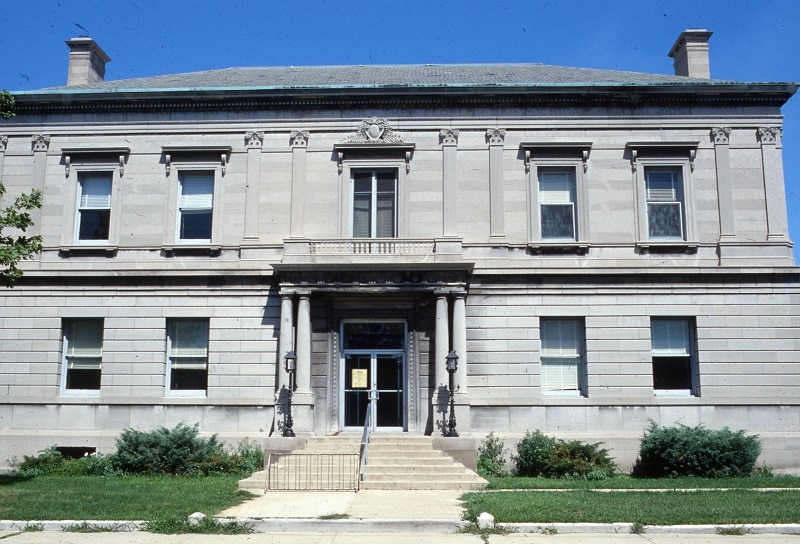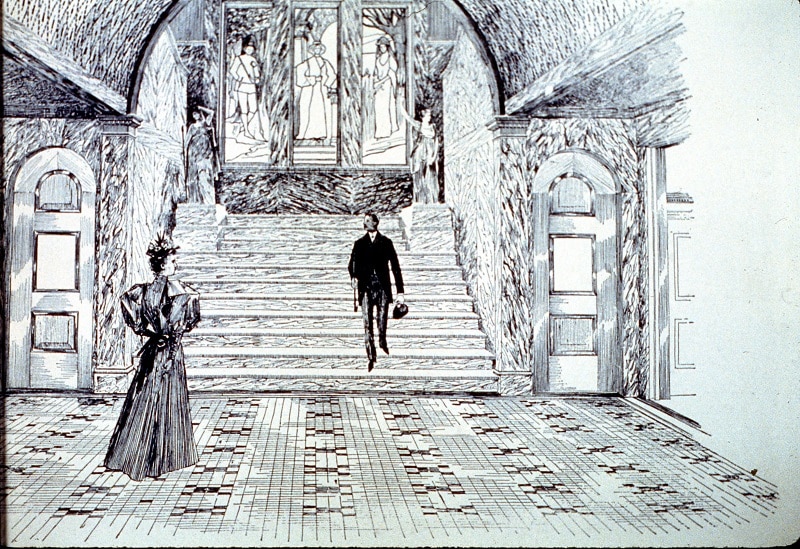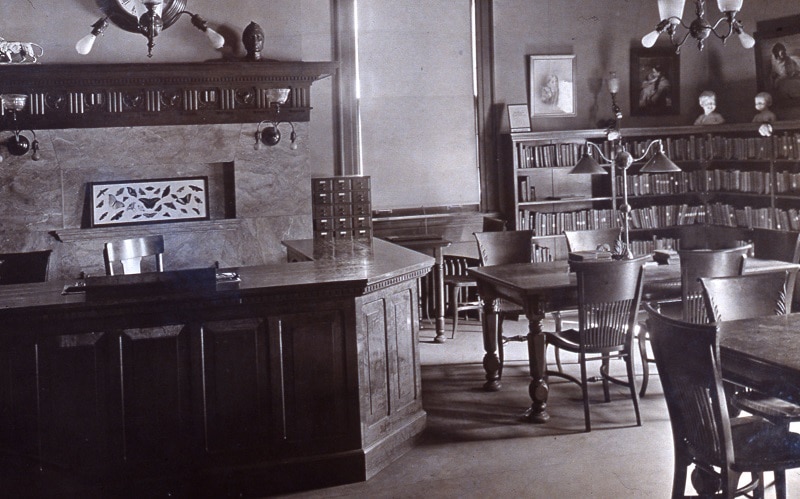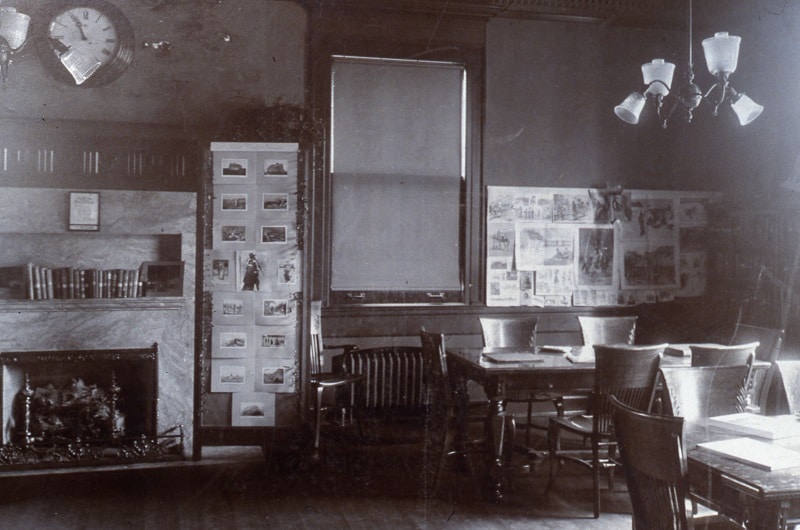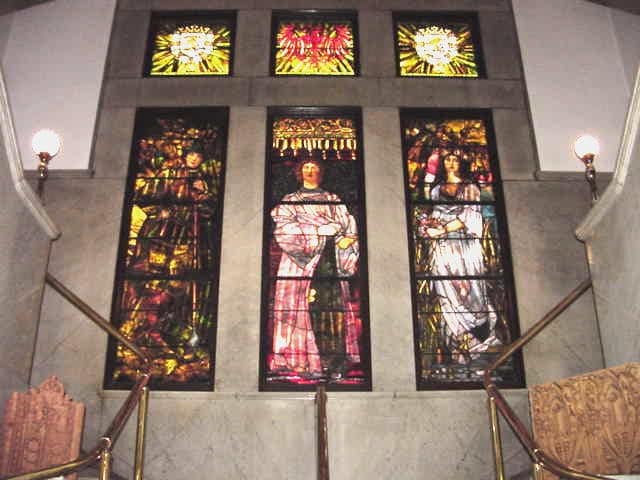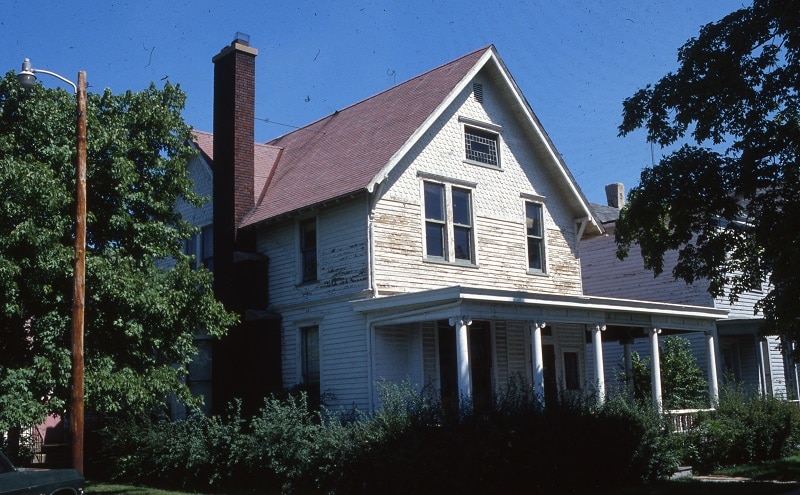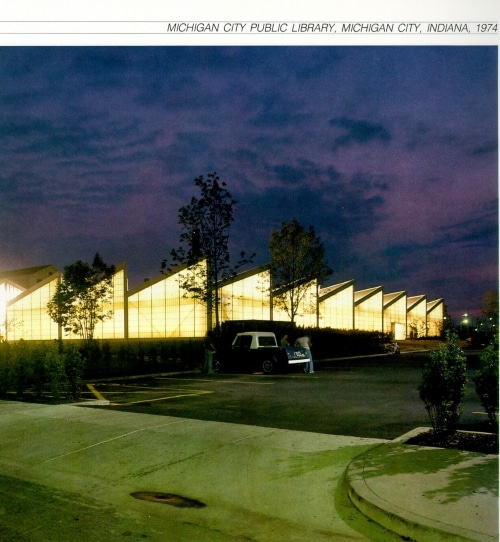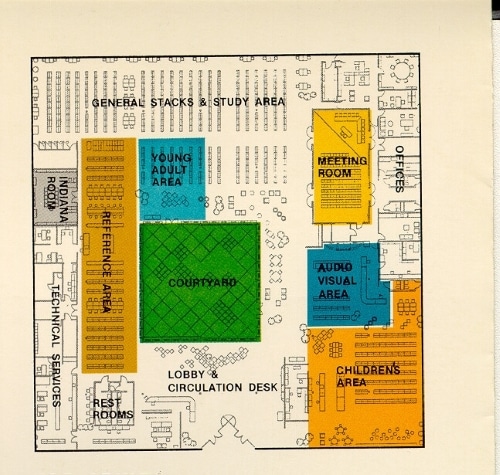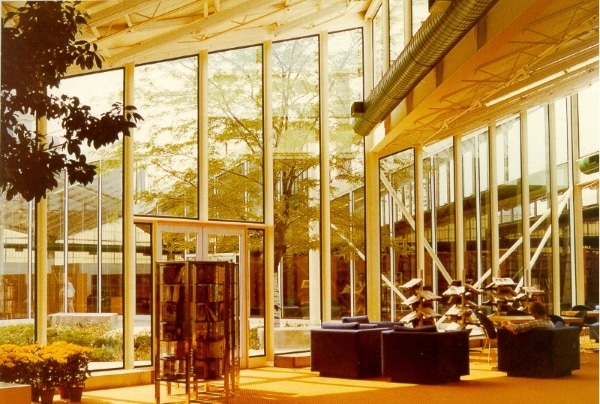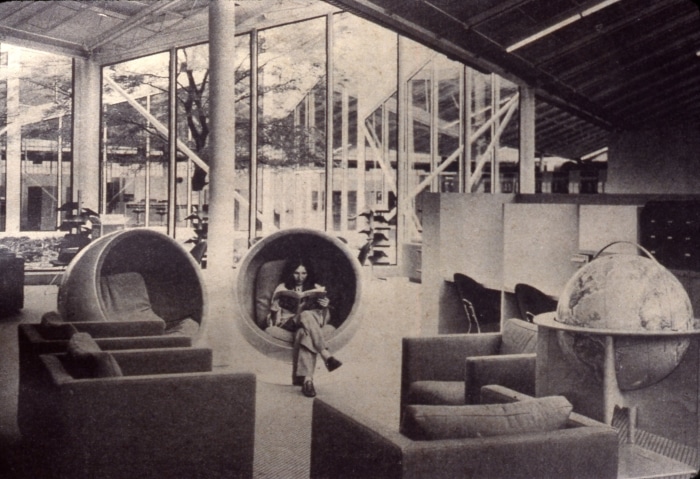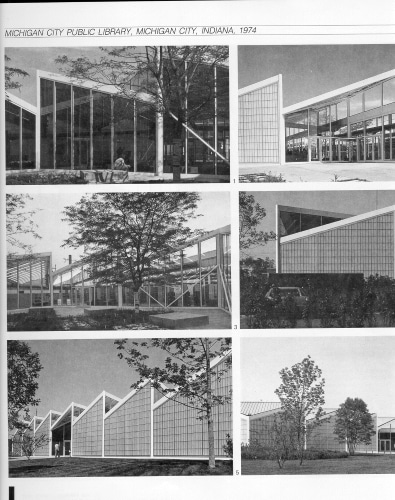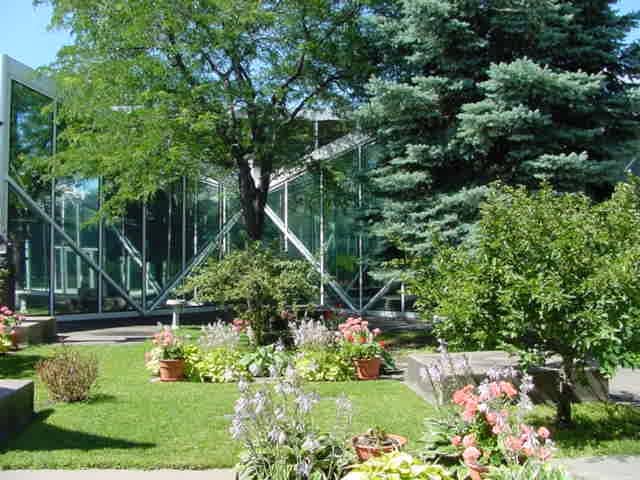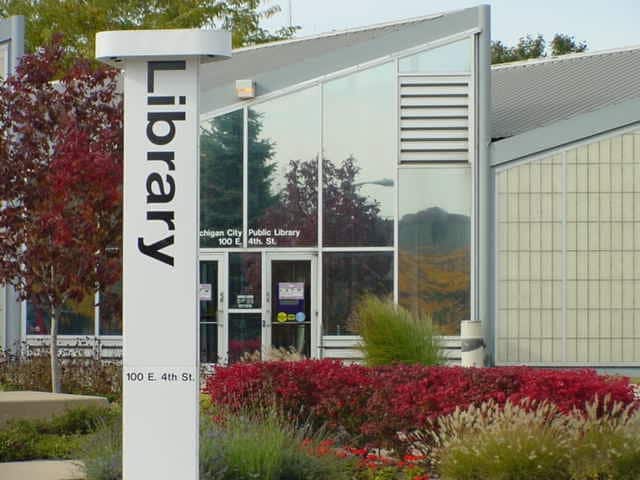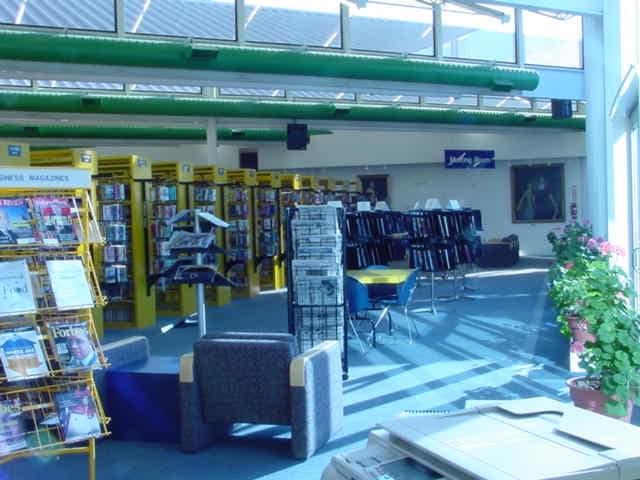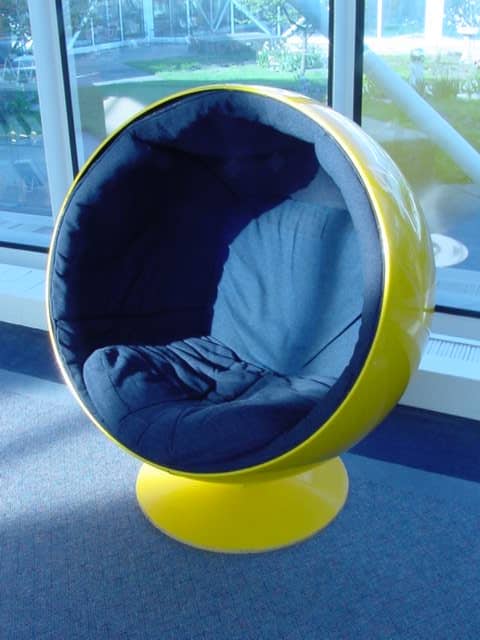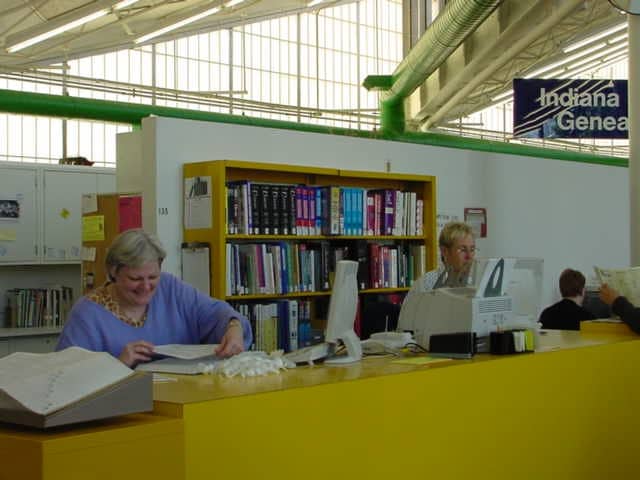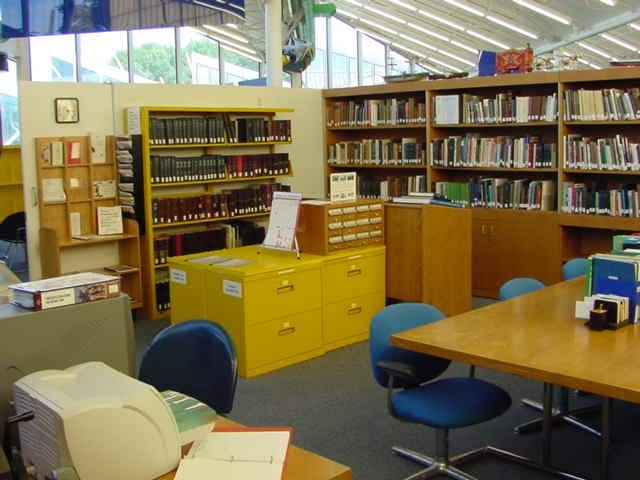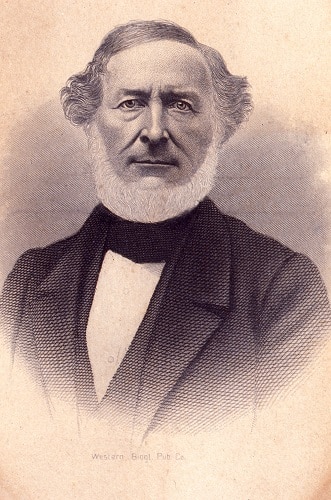
George Ames, a druggist by trade, was one of Michigan City’s first successful businessmen. In 1889, his will contained a bequest of $5,000 to establish a library fund, provided that a library be built within ten years. This bequest encouraged a local literary society, the Fortnightly Club, to take the necessary steps to secure a library for the town.

The estimated cost of the library building was $25,000.
John H. Barker, railroad car builder and Michigan City’s leading industrialist, offered to give one-third of the entire cost if the remainder could be raised among the citizens of the community. The land and building for the library were financed through private subscription.
A Library Association was formed in 1895. A committee appointed by this association raised $30,000 locally and purchased the Bowes property at the northeast corner of Eighth and Spring St. Walter Vail and N.P. Rogers provided substantial financial assistance in this effort.
The original library building, built of Indiana blue limestone in the classic style of the day, opened to the public on October 9, 1897. Marilla Freeman of Chicago was hired to be the first Librarian. Within three months the library’s complete collection of 3,000 books was available for check-out. As the new patrons ascended the steps of their library, carved in the front cornice extending the entire length of the building, they could read the inscription: PUBLIC LIBRARY BUILT BY THE PEOPLE FOR THE PEOPLE OF MICHIGAN CITY.
Responding to popular demand, the library established a special Children’s Department in 1899 as a memorial to Michigan City lumberman A.R. Colborn. In 1928, the first children’s story hour was held. Children’s Services finally outgrew the library’s ability to contain them. In 1952, the Hall and Haller properties to the east of the Library building were purchased and turned into a separate children’s library.
The Michigan City Library Association, founded in 1895 to raise the necessary money to make the library a reality, provided the library with a self-perpetuating governing board for 72 years. In 1967, this board was dissolved to bring the library into accord with Indiana State law, making the library eligible for adequate tax support. Library Board members began serving appointed terms of four years. These voluntary appointments are made by the Michigan City School Board, the LaPorte County Council and the LaPorte County Commissioners.
In 1971, the library embarked on an innovative, if temporary, experiment. The building at Eighth and Spring Streets was bursting at the seams. Space was severely limited and, in some areas, substandard. It was a difficult place to study in, and access to materials was cumbersome. For example, all fiction published prior to 1968 was stored in the basement! What’s more, Michigan City’s once bustling downtown was in a state of flux. It was during this time, with the help of federal funding, that the library established its Mall Branch in Marquette Mall. Open until 1979, the Branch served a vital function, providing limited but easily accessible service during this period of change. It also served as a kind of bridge, spanning the library’s transition from the old building to new, from antiquated service to state-of-the-art.
Michigan City’s new public library opened in 1977 at 100 E. 4th Street. The site was selected by the Library Board after more than a year of study. Fifteen possible sites were considered, with the 4th St. site scoring highest for its accessibility by both public and private transportation. Other conditions favoring the site were its proximity to high traffic generators such as the Post Office and downtown banks. The site was also one of the few sites actually large enough to allow full development.
Plans for the new building were ambitious. Designed by world renowned architect Helmut Jahn, the building would be an architectural landmark—a showpiece for Michigan City. Not only that, library services would be dramatically expanded. Available space for books would be more than doubled. There would be seats for over 200 casual readers. The Youth Department would be incorporated within the building, bringing both children and adults under the same roof. An Indiana Room would be established for a collection on the city’s heritage and Indiana historical items.
Completed in June, 1977, the building was erected by Larson-Danielson Construction Co. of LaPorte, IN. It offers 35,000 square feet on one level with parking for 70 cars. The building provides space to house a book collection of 147,000 volumes, seats for 208 readers, and a meeting room with seats for 200 persons.
The exterior walls are translucent fiberglass allowing sunlight to enter during the day and creating a soft glow outside at night. Further, the windowless exterior walls direct attention to the interior courtyard with its honey locust trees, Virginia creeper and shrubbery. The courtyard is open to the elements and is enclosed by glass walls. Doors into the courtyard permit access by library visitors. The sawtoothed roof is divided into seven sections comprised of long clearstory windows designed for additional natural lighting.
The building opened with a Dedication Week of festivities on Sunday, October 30, 1977. U.S. Housing and Urban Development Secretary Patricia Harris and Congressman John Brademas attended ceremonies that were officiated by Library Trustee Irving Levin.
The completed building won numerous architectural awards:
1977 State Design Honor Award
Illinois Council of the American Institute of Architects
1977 Distinguished Building Award
Chicago Chapter of the American Institute of Architects
1978 ALA Honor Award
American Institute of Architects
1979 Architectural Award of Excellence
American Institute of Steel Construction, Inc.
The physical growth and expansion of the library triggered the inclusion of automation in its plan to meet the needs of the community’s future. In 1978, the library became the first automated public library in the state of Indiana. As technology has changed, the library’s collections and online services have grown to include CDs, DVDs, Playaway MP3 audiobooks, downloadable e-books and e-audiobooks, online journals and magazines, research databases, video games, and more. The library also includes a public computer lab and offers Wi-Fi.
In 1997, on the occasion of the library’s 100th anniversary, the sculpture Centura was erected in the library courtyard. The sculpture was commissioned and donated by John and Edward Vail in memory of their father. John Vail had imagined a sculpture of a woman holding a book high in the air, symbolizing the power of reading to pull humankind to higher realms by raising knowledge, awareness and spirit. Centura was created by nationally-recognized sculptor S. Thomas Scarff. Scarff translated John Vail’s concept into a 15-foot abstract female figure, with a “wave of freedom” flowing from her head, holding a realistic book in her upraised arm. The pages of the book are polished stainless steel, so viewers will always see a reflection of the sky in them. But the figure wears a yoke on her shoulders, attached to the ground with a cable, creating a dynamic tension between the feeling of release and the weight of worldliness. A frieze at the base, depicting scenes of reading and Michigan City, complete the sculpture.
As an outstanding community cultural and information center, the collections, displays, and programs of the Michigan City Public Library make it one of the most active locations in the city. The renowned Writing Out Loud series, along with a host of other programs conducted by our award-winning Public Relations Department, draws large audiences every year. The library sponsors The Learning Center, a successful program that provides tutoring to children, teens, and adults in literacy, math and English skills, and GED preparation. The Youth Services Department provides collections, programming, and support for literacy and STEAM skills for children from ages birth to 18. The library also offers a successful career services program, including assistance with resumes and job applications. Through its many roles, the Michigan City Public Library demonstrates its commitment to service to the community.



